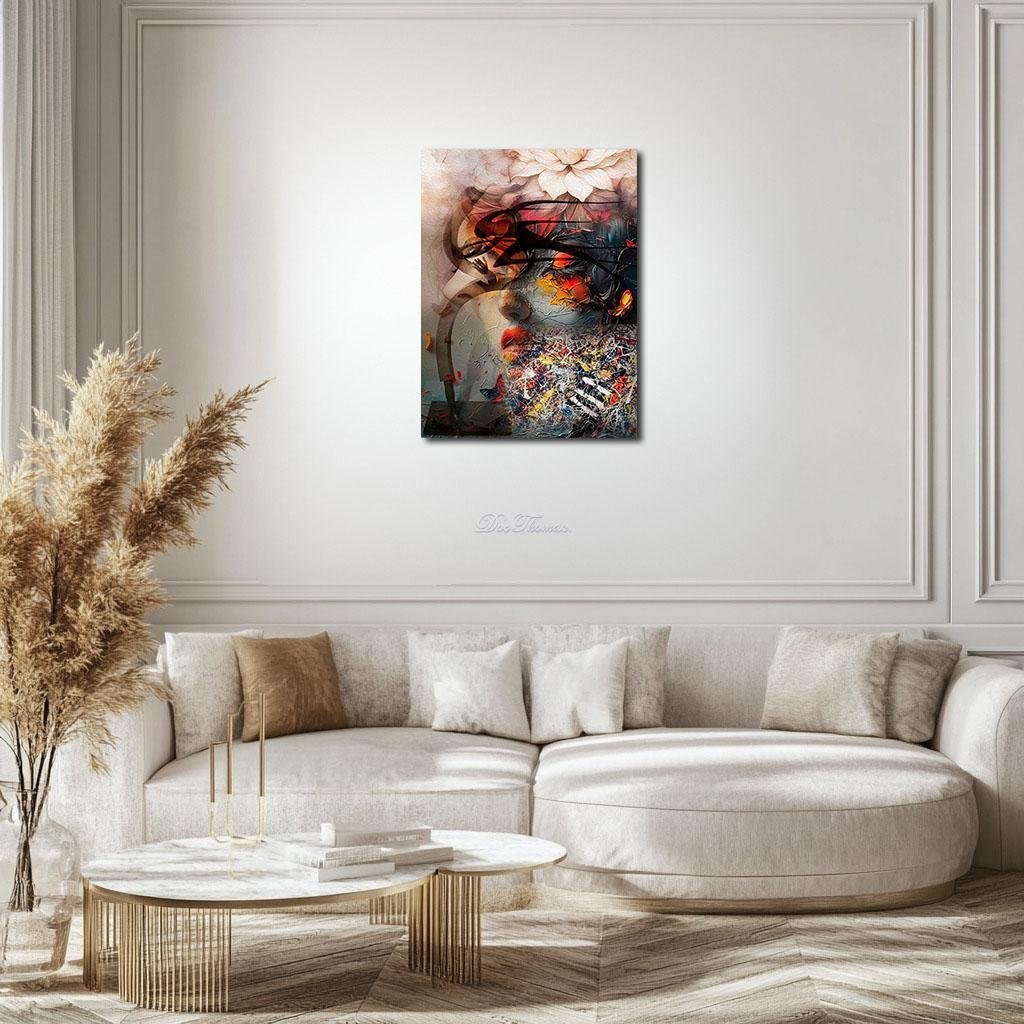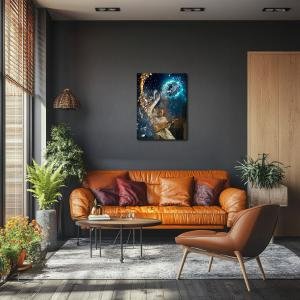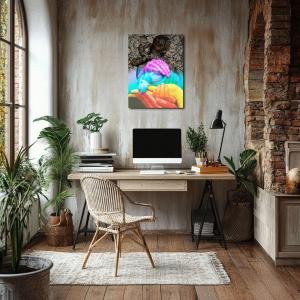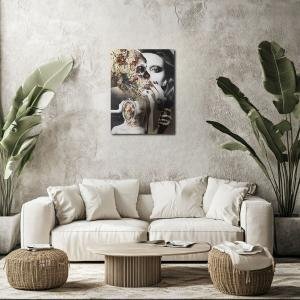Veins of Porcelain: The Bloom Beyond the Bruise
Veins of Porcelain: The Bloom Beyond the Bruise transforms Pollock’s Number 17A into an intimate, almost devotional portrait of emotional turbulence. A woman’s cracked porcelain face becomes the landscape for Pollock’s wild strokes—ochres burning like old fire, blacks slashing across like grief, yellows fluttering like memory. A pale lotus blooms above her brow, signaling rebirth amid disarray. The painting invites viewers to witness chaos internalized—not just as destruction, but as transformation. This is Pollock’s rhythm, not shouted, but whispered beneath the skin.
Please see Below for Details…
Hotline Order:
Mon - Fri: 07AM - 06PM
404-872-4663
Veins of Porcelain: The Bloom Beyond the Bruise reimagines Jackson Pollock’s Number 17A as an internal landscape where passion, memory, and identity collide in a fragile bloom of selfhood. In this surreal hybrid of abstraction and portraiture, Pollock’s wild expressionistic textures are absorbed into the contours of a face half-lit and half-shadowed, a soul caught mid-transformation. The visual language becomes deeply feminine, deeply fractured, and fiercely alive.
The painting is structured around the haunting visage of a woman layered in transparent veils of Pollock’s gestural brushwork. Her profile leans gently into the composition, lips closed but trembling, as if suppressing a memory too volatile for speech. Her skin is smooth but cracking—fine lines like porcelain fissures trace beneath her eye, and within these cracks lie molten rivers of Pollock’s palette: scorched ochres, fiery vermilions, piercing whites, and ink-heavy blacks.
Pollock’s actual work—the iconic Number 17A —bleeds from the lower portion of the canvas like emotion seeping from the subconscious. It is not simply overlayed, but intertwined. His energetic paint drips—chaotic and precise—crawl up her cheekbones, coil around her mouth, and disappear into the depths of her temple. His cobalt streaks pass like ghosts through her hair, while his whites carve silence across her chin. The yellow here sings with a desperate lightness, like the memory of a sun seen through a cracked mirror. Black loops tear across her forehead like storm lashes, the gesture of an artist mid-scream or mid-release.
The flower above her head, luminous and delicate, floats in soft contrast to the chaos beneath. It is a lotus rendered in pale beige, tinged with hints of smoke and time. The petals dissolve into mist, and it’s unclear whether the flower is blooming or fading. It serves as both halo and scar, both crown and afterthought. The lotus, symbol of rebirth, becomes the final breath of a cycle—hovering above a woman undone by her own becoming.
Color is the emotional language of this reinterpretation. The base tone is warm flesh washed in ivory, overlaid with acid yellows, coal blacks, rust reds, and indigo veins. Pollock’s energy surges in these colors, each one pulsing with residual memory. The yellow flickers like heat through the surface—a longing unspoken. The reds, placed with surgical violence, are not blood but emotional rupture. The deep black swaths carve across the scene like doubt, tearing through the certainty of beauty. The whites attempt to hold space, to cleanse—but they cannot stop the collapse. Each hue is layered with intention, but none remain pure. They are all infected with the other. That is the truth of feeling.
As an artist, my thought while crafting this piece was to translate Pollock’s instinctual rage into a more internalized terrain. Number 17A has always felt like an emotional detonation, but I wondered what happens when that detonation turns inward. Not a canvas flung with paint, but a person flooded by it. What happens when the abstract becomes autobiographical? When the movement becomes memory? When the brushstrokes begin to resemble the lines of a face broken by the very colors that define it?
The duality of this work is intentional: beauty and violence, clarity and chaos, form and formlessness. The woman does not scream—but the paint around her does. She is silent not because she is without pain, but because she has already said everything in color. Her eyes are closed not in peace, but in exhaustion. Yet she remains upright. The flower still blooms. The paint still drips. The art, like the woman, survives through fragmentation.
Veins of Porcelain: The Bloom Beyond the Bruise becomes a shrine to the self in flux. The face is not the subject—it is the vessel. Pollock’s violence is no longer about war with the canvas, but communion with the self. Each splatter and stroke now serves as muscle memory, each fracture a contour of becoming. The bloom beyond the bruise is not innocence regained—it is wisdom accepted.
Add your review
Your email address will not be published. Required fields are marked *
Please login to write review!
Looks like there are no reviews yet.








